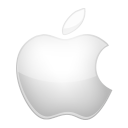
The Internet
The Internet is the global system of interconnected computer networks that uses the Internet Protocol Suite (TCP / IP) to communicate between networks and devices. It is a network of networks made up of local and global private, public, academic, corporate, and governmental networks connected by a wide range of electronic, wireless and optical networking technologies. The Internet offers a wide range of information resources and services, such as interconnected hypertext documents and applications of the World Wide Web (WWW), e-mail, telephony and file sharing.
The origins of the Internet date back to the development of packet switching and to research commissioned by the United States Department of Defense in the 1960s to enable computer time sharing. The precursor core network, ARPANET, initially served as the backbone for the interconnection of regional academic and military networks in the 1970s. Funding from the National Science Foundation Network as a new backbone in the 1980s, as well as private funding for other business extensions, has led to worldwide participation in the development of new network technologies and the merger of many networks. The linking of commercial and business networks in the early 1990s marked the beginning of the transition to the modern Internet and generated sustained exponential growth as generations of institutional, personal and mobile computers were connected to the network. Although the Internet was used extensively by academia in the 1980s, marketing has incorporated its services and technologies into virtually every aspect of modern life.
Most traditional means of communication, including telephony, radio, television, paper mail and newspapers, are being reshaped, redefined or even bypassed by the Internet, giving rise to new services such as e-mail, Internet telephony, Internet television, music online, digital newspapers and video streaming websites. Newspapers, books and other print publications are adapting to website technology or are being reshaped into blogs, web feeds and online news aggregators. The Internet has enabled and accelerated new forms of personal interaction through instant messaging, Internet forums and social networking services. Online shopping has grown exponentially for major retailers, small businesses and entrepreneurs as it allows companies to extend their "physical" presence to serve a larger market or even sell goods and services entirely online. Business-to-business and financial services on the Internet affect the supply chains of entire industries.
The Internet does not have a single centralized governance neither in the technological implementation nor in the policies for access and use; each constituent network establishes its own policies. The exaggerated definitions of the two main namespaces on the Internet, the Internet Protocol address space (IP address) and the Domain Name System (DNS), are directed by a maintenance organization, the Internet Corporation for Assigned Names and Numbers (ICANN). Technical support and standardization of core protocols is an activity of the Internet Engineering Task Force (IETF), a non-profit organization of freely affiliated international participants that anyone can associate with providing technical expertise. In November 2006, the Internet was included in USA Today's New Seven Wonders list.
In the 1960s, the United States Department of Defense's Agency for Advanced Research Projects (ARPA) funded research into computer time sharing. Research into packet switching, one of the fundamental technologies of the Internet, began in the work of Paul Baran in the early 1960s and, independently, of Donald Davies in 1965. After the Symposium on the Principles of Operating Systems in 1967, packet switching from the proposed NPL network it was incorporated into the design of ARPANET and other resource sharing networks such as Merit Network and CYCLADES, developed in the late 1960s and early 1970s.
ARPANET development began with two network nodes that were interconnected between the Network Measurement Center at the University of California, Los Angeles (UCLA) Henry Samueli School of Engineering and Applied Science headed by Leonard Kleinrock, and the NLS system at SRI International (SRI) by Douglas Engelbart in Menlo Park, California on October 29, 1969. The third site was the Culler-Fried Interactive Mathematics Center at the University of California, Santa Barbara, followed by the Department of Graphics at the University of Utah.




